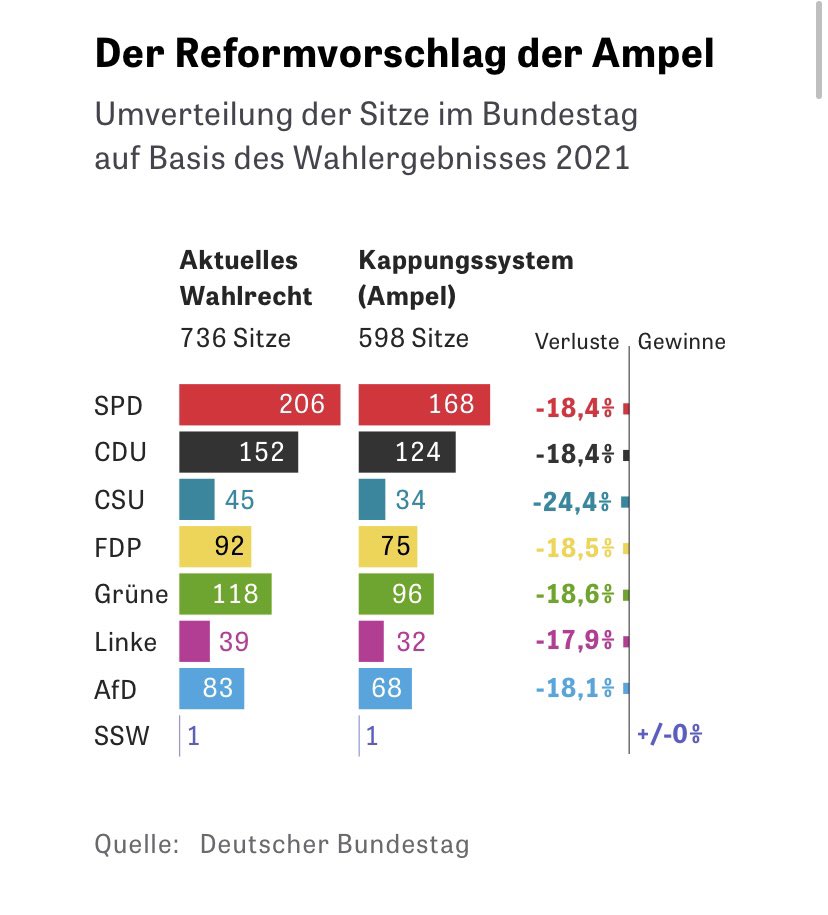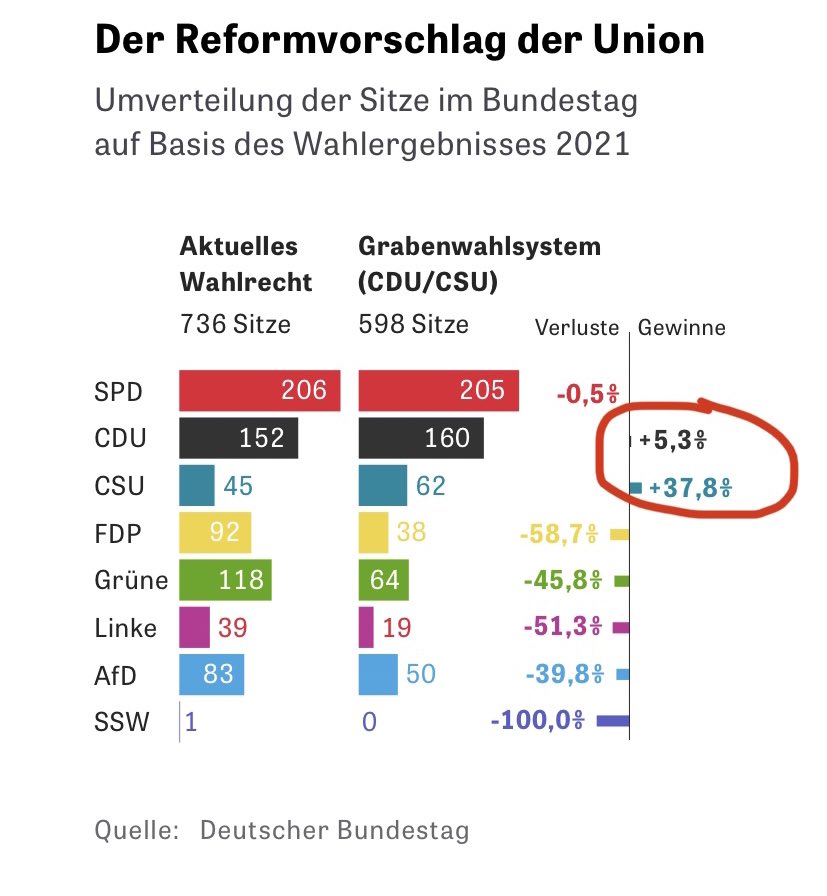I wrote a text as a comment on the episode of the Logbuch Netzpolitik podcast on the FTX debacle but could not post it to the comment section (because that appears to be disabled). So in order not to waste I post it here (in German):
1. Hebel (leverage): Wenn ich etwa glaube, dass in Zukunft die Appleaktie weiter steigen wird, kann ich mir eine Appleaktie kaufen, um davon zu profitieren. Die kostet momentan etwa 142 Euro, kaufe ich eine und steigt der Preis auf 150 Euro habe ich natürlich 8 Euro Gewinn gemacht. Besser natürlich noch, wenn ich 100 kaufe, dann mache ich 800 Euro Gewinn. Hinderlich ist dabei nur, wenn ich nicht 14200 Euro dafür zur Verfügung habe. Aber kein Problem, dann nehme ich eben einen Kredit über den Preis von 99 Aktien (also 14038 Euro) auf. Der Einfachheit halber ignorieren wir mal, dass ich dafür Zinsen zahlen muss, die machen das ganze Spiel für mich nur unattraktiver. Ich kaufe also 100 Aktien, davon 99 auf Pump. Ist der Kurs bei 150, verkaufe ich sie wieder, zahle den Kredit ab und gehe mit 800 Euro mehr nach Hause. Ich habe also den Kursgewinn verhundertfacht.
Doof nur, dass ich gleichzeitig auch das Verlustrisiko verhundertfache: Fällt der Aktienkurs entgegen meiner optimistischen Erwartungen, kann es schnell sein, dass ich beim Verkauf der Aktien nicht mehr genug Geld zusammenbekomme, um den Kredit abzuzahlen. Das tritt dann ein, wenn die 100 Aktien weniger wert sind, als der Kredit, wenn also der Aktienwert unter 140,38 Euro fällt. Wenn ich in dem Moment meine Aktien verkaufe, kann ich grade noch meine Schulden bezahlen, habe aber mein Eigenkaptial, das war die eine Aktie, die ich von meinem eigenen Geld gekauft habe, komplett verloren. Ist der Kurs aber noch tiefer gefallen, kann ich beim Spekulieren auf Pump aber mehr als all mein Geld verlieren, ich habe nichts mehr, aber immer noch nicht meine Schulden abbezahlt. Davor hat aber natürlich auch die Bank, die mir den Kredit gegeben hat, Angst, daher zwingt sie mich spätestens, wenn der Kurs auf 140,38 gefallen ist, die Aktien zu verkaufen, damit sie auf jeden Fall ihren Kredit zurück bekommt. Daniel nennt das "glattstellen".
2. Das finde ich natürlich blöd, weil der Kurs viel schneller mal um diese 1,42 Euro fällt, als dass er um 8 Euro steigt. Um das zu verhindern, kann ich bei der Bank noch andere Dinge von Wert hinterlegen, zB mein iPhone, das noch 100 Euro wert ist. Dann zwingt mich die Bank erst meine Aktien zu verkaufen, wenn der Wert der Aktien plus den 100 Euro für das iPhone unter den Wert des Kredits fällt. Sie könnte ja immer noch das iPhone verkaufen, um ihr Geld zurück zu bekommen. Wenn ich aber kein iPhone zum Hintelegen habe, muss ich etwas anderes werthaltiges bei der Bank hinterlegen (collateral).
3. Hier kommen die Tokens ins Spiel. Ich kann mir 1000 Kryptotokens ausdenken (ob mit dem Besitz von computergenerieren Cartoons von Tim und Linus verknüpft ist dabei egal). Da ich mir die nur ausgedacht habe, bin ich noch nicht weiter, so haben sie ja keinen Wert. Ich kann versuchen, sie zu verkaufen, aber dabei werde ich nur ausgelacht. Hier kommt meine zweite Firma, der Investment Fond ins Spiel: Mit dem kaufe ich mir selber 100 der Tokens zum Preis von 30 Euro das Stück ab. Wenn jetzt nicht klar ist, dass ich mir selber die Dinger abgekauft habe (ggf. über einen Strohmann:in) sieht es so aus, als würden die Tokens ernsthaft für einen Wert von 30 Euro gehandelt. Ausserdem verkaufe ich noch den Kunden meines Fonts 100 weitere auch für 30 Euro mit dem Versprechen, dass die Besitzer der Coins Rabatt auf die Gebühren meines Fonds bekommen. Spätestens jetzt ist der Wert von 30 Euro pro Token etabliert. Ich habe von den ursprünglichen 1000 immer noch 800. Jetzt kann ich behaupten, ich habe Besitz im Wert von 24000, denn das sind 800 mal 30 Euro. Diesen Besitz habe ich quasi aus dem Nichts geschaffen, da die Annahme, dass ich auch noch echte Käufer für die anderen 800 bei diesem Preis finden kann, Quatsch ist.
Wenn ich das ganze aber nur gut genug verschleiere, glaubt mir vielleicht jemand, dass ich wirklich auf Werten von 24000 Euro sitze. Insbesonder die Bank aus Schritt 1 und 2 glaubt mir das vielleicht und ich kann diese Tokens als Sicherheit für den Kredit hinterlegen und damit noch höhere Kredite aufnehmen, um damit Apple-Aktien zu kaufen.
Das ganze fliegt erst auf, wenn der Kurs der Aktien so weit fällt, dass die Bank darauf besteht, dass der Kredit zurück gezahlt werden muss. Dann muss ich eben nicht nur die Aktien und das iPhone verkaufen, sondern auch noch die weiteren Tokens. Und dann stehe ich eben ohne Hose da, weil dann klar wird, dass natürlich niemand die Tokens, die ich mir einfach ausgedacht habe, haben will, schon gar nicht für 30 Euro. Dann fehlt in den Worten von Daniel die "Liquidität".
Das ist nach meinem Verständnis, was passiert ist, natürlich nicht mit Apple-Aktien und iPhones, aber im Prinzip. Und der Sinn des mit sich selbst Geschäfte-im-Kreis machen, ist eben, damit künstlich die scheinbaren Preise von etwas, wovon ich noch mehr habe, in die Höhe zu treiben. Der Fehler des ganzen ist, dass schwierig ist, die Werte von etwas zu beurteilen, was gar nicht wirkich gehandelt wird, bzw wo der Wert nur auf anderen angenommenen Werten beruht, wobei sich die Annahmen über die Werte sehr schnell ändern können, wenn jemand "will sehen!" sagt und keine realen Werte (wie traditionell in Form von Fabriken, Know-How etc) dahinter liegen.





